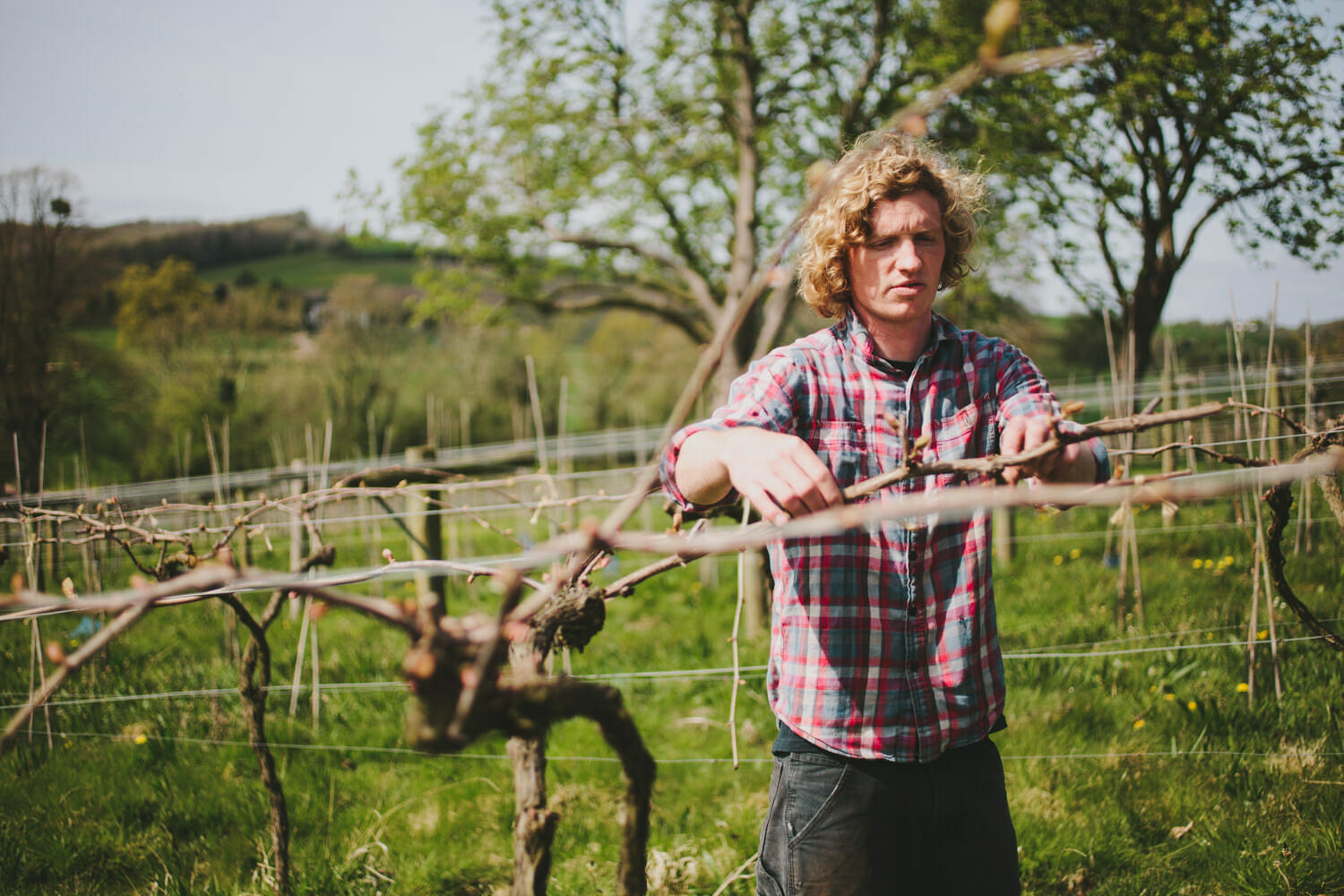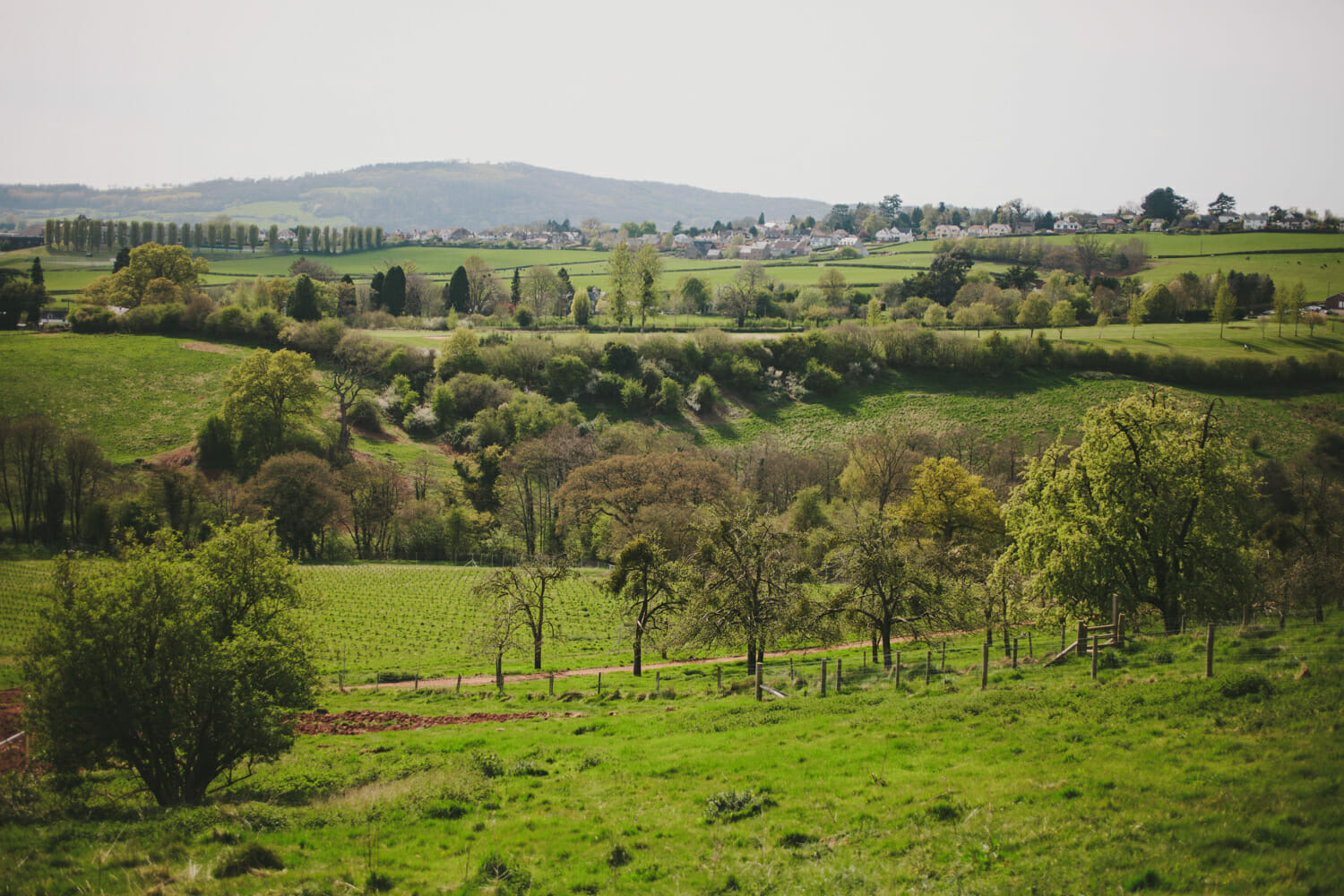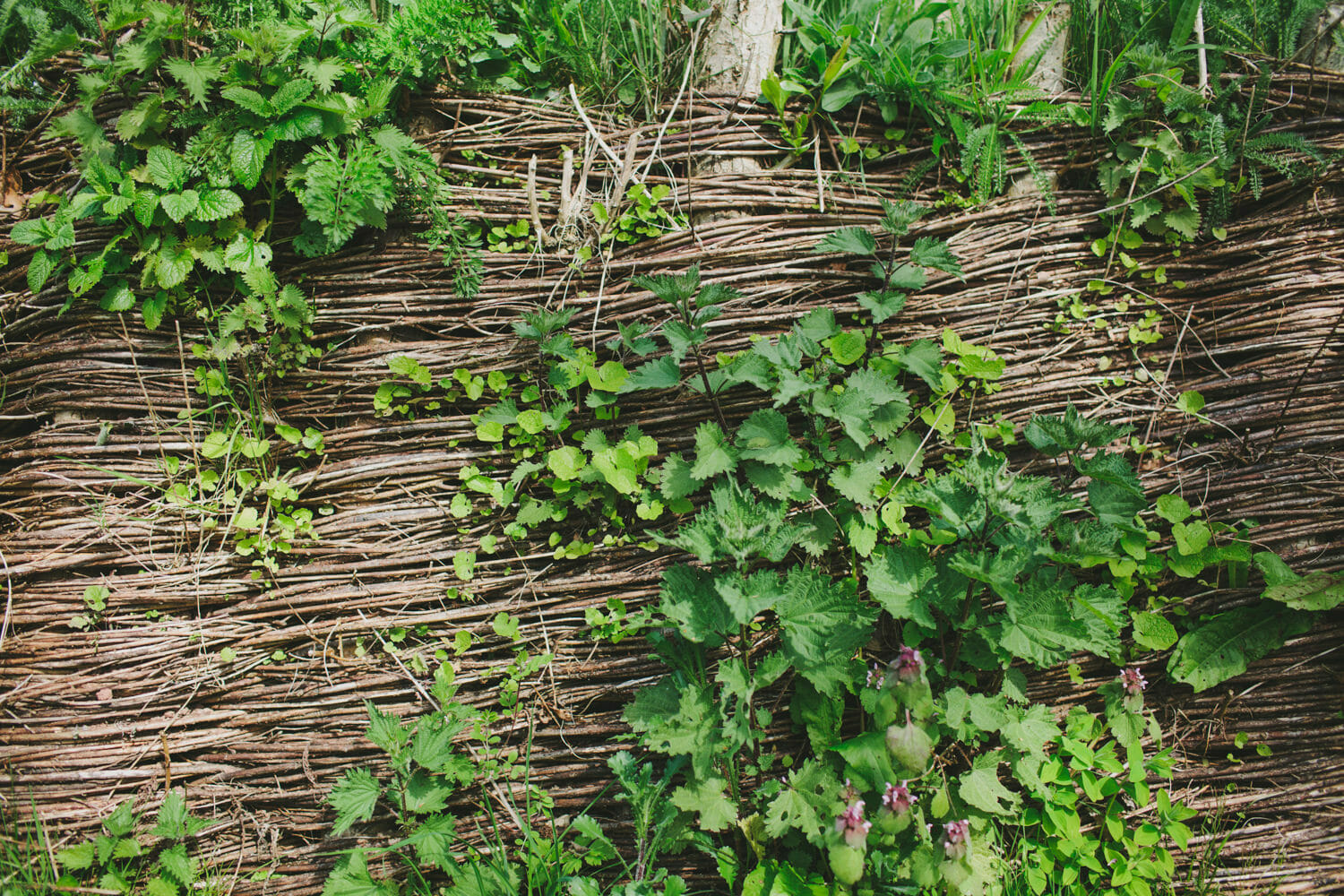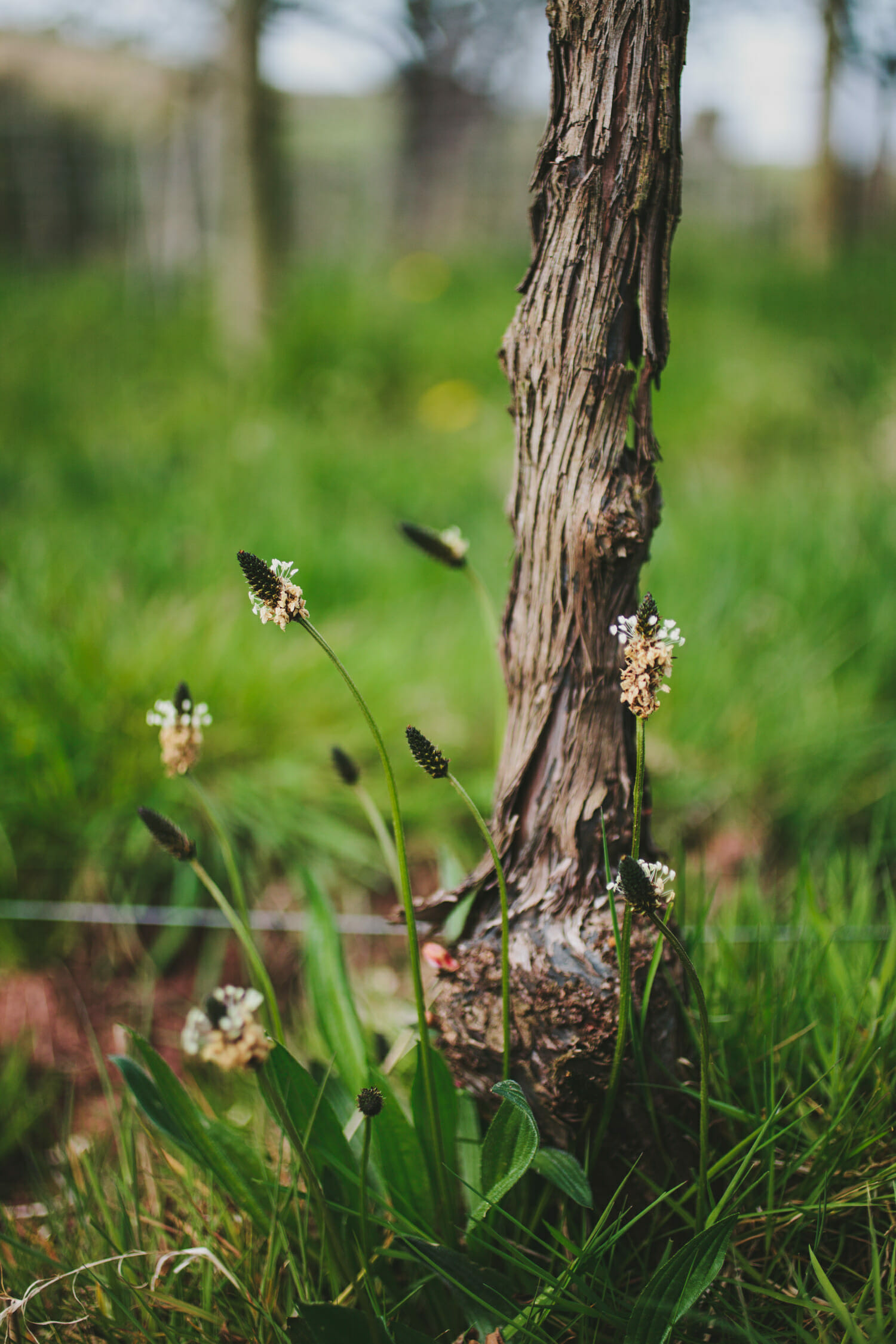
MEET THE MAKER – David
DAVID MORRIS, ANCRE HILL VINEYARDS
Small berries, weeds and pests: how to spot a Biodynamic vineyard.




Ancre Hill, set in the Wye Valley in Wales, has practiced Biodynamic farming since 2011.
Biodynamic? Sommelier Ross translates: ‘Biodynamic winemaking takes organic farming one step further – applying an holistic approach to every step of the process.’
Here is our on-site guide to spotting the tell-tale signs of a Biodynamic vineyard.
What we see: Vines populated with small bunches of small berries.
What this means: That the wine will be full of flavour.
David expands: ‘Small bunches of small-berried grapes mean that there is a higher surface area of skin (than on their larger, bushier piers); and the skin is where all of the flavour lies. We press the grapes really slowly so that the phenolic ripeness of the skin can shine through in the juice. This means that our base wine really packs a punch.’
Phenolic ripeness? Over to Wine Director Sam Olive: ‘when the grape reaches phenolic ripeness then the tannins and other molecules that contribute to the wine’s colour, taste, and aroma, are at their best (i.e they go from green and bitter to soft and ripe-tasting).’
What we see: Geneva Double Curtain trellising.

What we see if we’re not experts in trellising: Plenty of space between the vines.
What this means: The vines have space to grow and thrive.
David: ‘The soils at Ancre Hill are fantastic, deep and full of microbes and nutrients. This means that they grow into big plants. We control the vigour and growth of the vines by giving them plenty of space.’
What we see (for the non-trellising expert): High vines.
What this means: That they can manage the vineyard floor.
David: ‘High vines mean we don’t need to worry about humidity build up in the canopy, so we can let the grass and plants grow underneath. There is fantastic biodiversity as all the different plants that grow here are rooting at different depths; something is flowering in each season; so it’s great for all the insects and microorganisms in the soil. There’s a symbiotic relationship between the roots of those plants and the vines. The height also allows air to flow through the canopy, keeping the grapes clear without much need for chemicals.’
What we see (still on the trellising): Fruit exposed at the top of the vines.
What this means: It’s good for those phenolic compounds again.
David: ‘We lose 1.5% of the alcohol/ sugar levels (compared to Sussex and Kent). However, as the fruit is exposed at the top of the canopy those skins get really ripe as they have direct sunlight. When the juice runs through the skins during winemaking it picks up those phenolic compounds.’
What we see: Weeds, weeds everywhere.

What this means: That weeds are part of the ecosystem and may be used to treat the vines.
David: ‘Aside from a minimal amount of sulfur, all that we’re using to treat the vines are medicinal plants that we grow ourselves or go and forage. They grow in shady, warm, humid places as they are naturally very high in anti-oxidant, anti-fungal properties. These are equisetum (horsetail), nettle, and willow. We also use goosegrass and dandelion which are less common in Biodynamics. We spray preparation 500 and 501, which are horn silica and horn manure, over the soil to balance the osmotic effect. It’s like spraying hundreds of thousands of tiny mirrors or prisms over vineyard which then bounce the light off all parts of the canopy, getting all the leaves to maximise their photosynthesis.’
Preparation 500? (Here’s the bit about the cow horn). Biodynamic preparation 500 is basically cow manure, fermented in a cow horn buried in the vineyard, and then diluted and sprayed over it.
What we see: Healthy looking, strong, vines.
What this means: That the vines are self-regulating.
David: ‘They’re taking all their nutrients up from the soil, not from chemical feeds. Good soil is crucial to Biodynamic farming. All the land that we’ve planted on has been un-intensively farmed in its past, so the biodiversity was fantastic to start with. The pH of our soil is perfect. The depth of the soil and its structure is really good. We’ve got all of this going for us.’
What we see: Pests and snakes (ok, we didn’t sight a snake).
What this means: That there is a balanced eco-system.
David: ‘People often talk of insects as pests. Not in a biodynamic vineyard. As soon as we start getting all the green shoots growing from the buds we’ll have a lot of erinose mites (blister mites). If they stay on then most people will spray insecticides to kill them because they feed on and blister the leaves which then aren’t able to photosynthesise. We get hundreds of thousands of them. But after the blister mites come ladybirds and spiders. They eat all the larvae, and we don’t have any blistered leaves. Pest insects actually provide the habitat for predator insects to live.’
Bugs, weeds, and small (if any) fruit? I’m just one GDC trellis away from a Biodynamic vegetable patch!
